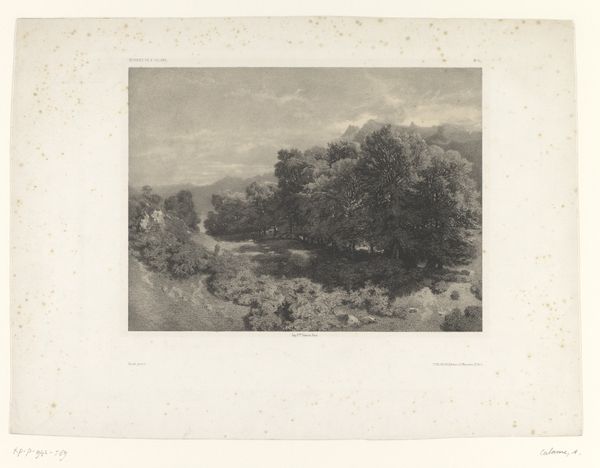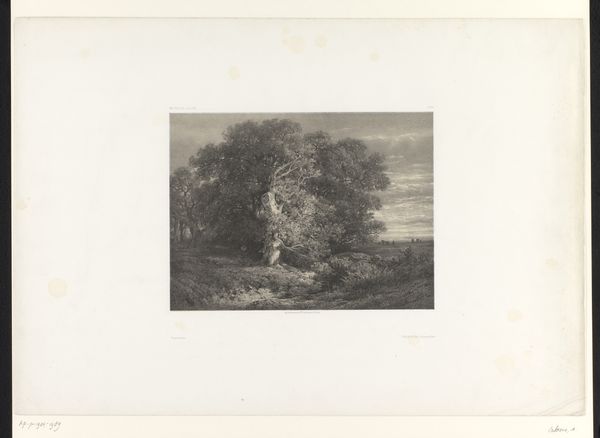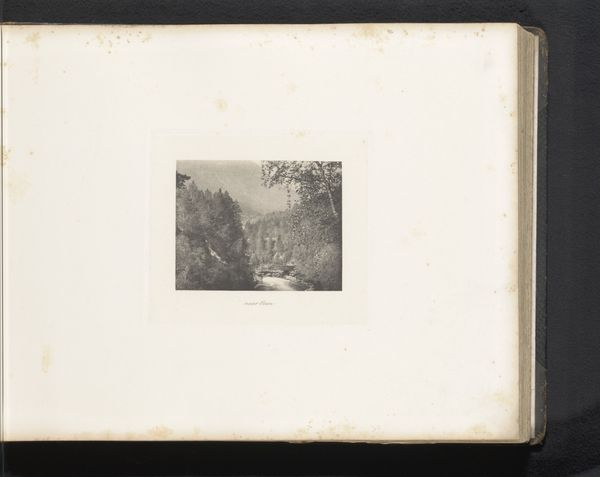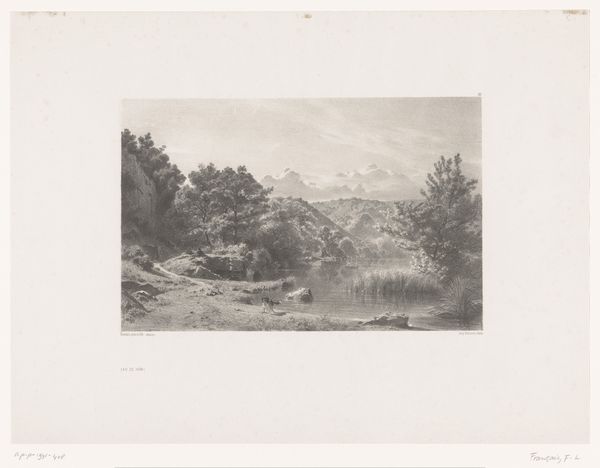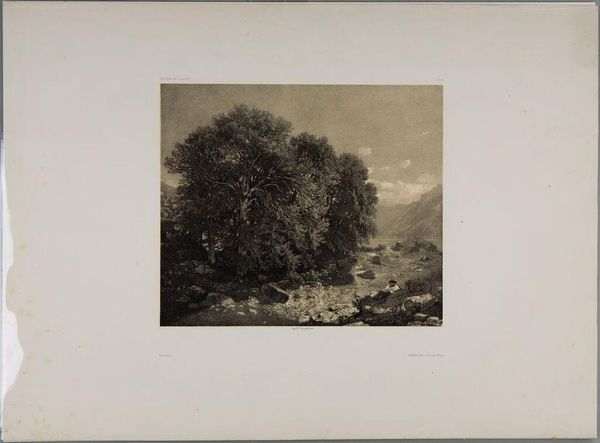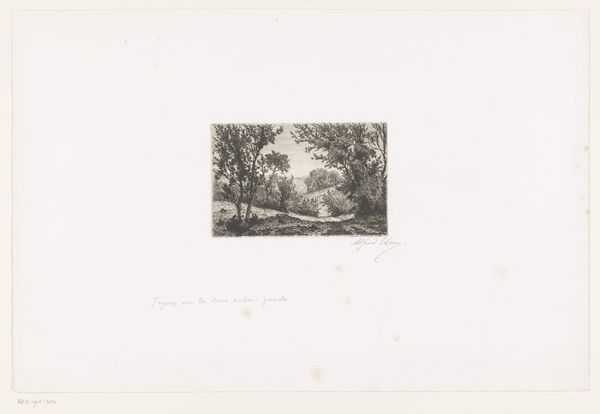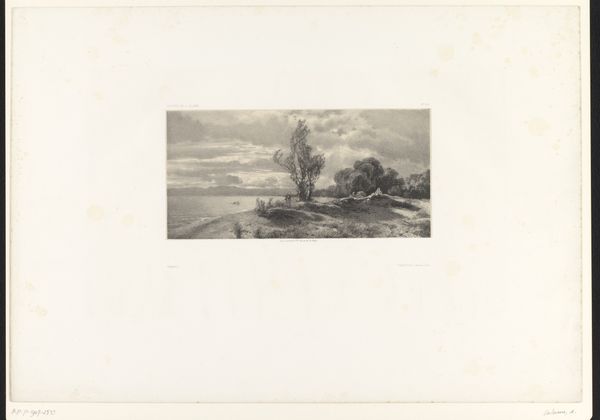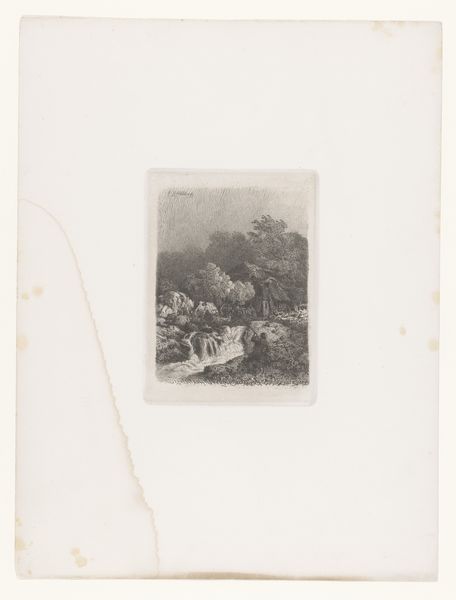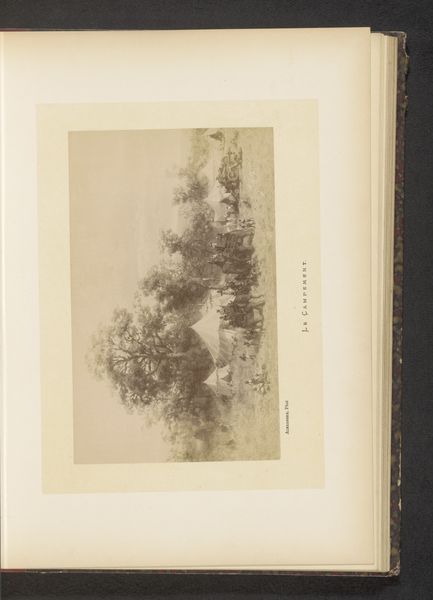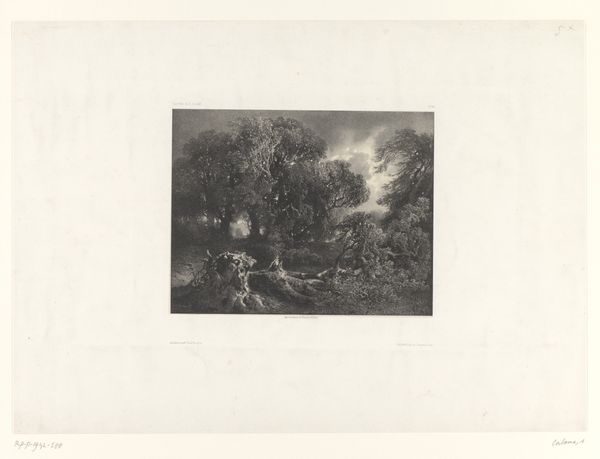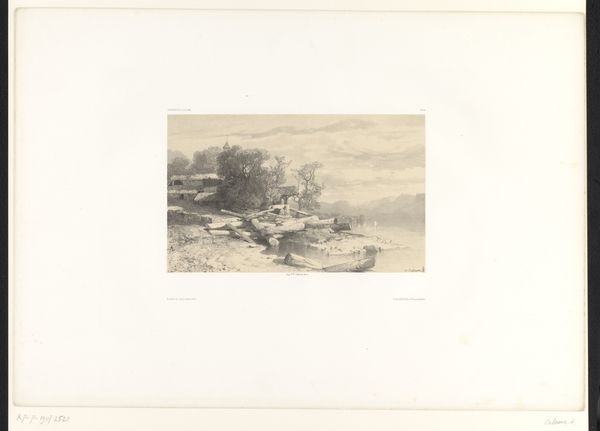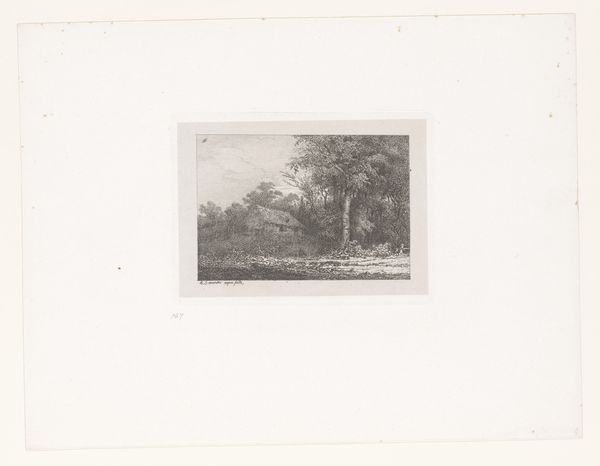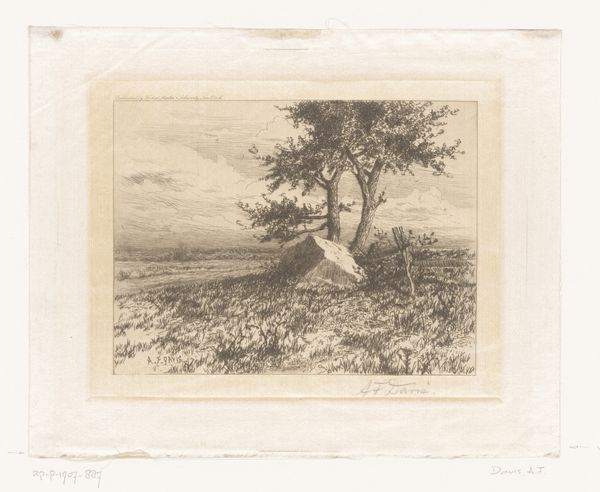
Dimensions: height 388 mm, width 557 mm
Copyright: Rijks Museum: Open Domain
Editor: We’re looking at “Berglandschap met bomen en een meer” or “Mountain Landscape with trees and a lake” created between 1852 and 1855 by Alexandre Calame. It's an etching, a print. It strikes me as quite serene, with the bulk of the trees and distant mountains framing the lone figure. What do you see in this piece? Curator: I see a potent symbol of the Romantic era's fascination with nature, especially untamed landscapes, but I am also struck by a dichotomy. Editor: Dichotomy? Curator: Yes, look at the tree, its complex branches forming a gothic frame almost, set against that calming lake, but look more carefully: is that a human form almost lost in that pastoral expanse? Is it beckoning the sublime or simply being dwarfed by nature's grandeur? Editor: It's subtle! I almost missed the figure completely. How does this play into cultural memory, as you see it? Curator: Calame gives us a window onto the cultural mindset of his time. Landscapes weren't just pretty pictures, they held allegorical and even spiritual meaning. This scene taps into a long tradition of viewing nature as both a source of solace and a reflection of the human soul, particularly the balance of the familiar with the wild unknown. Editor: I hadn’t considered how the landscape could mirror internal emotions in that way. Thanks, I'll certainly look at other landscapes with a new perspective. Curator: My pleasure. It's these underlying symbolisms and visual echoes that make the artwork live beyond its immediate aesthetic appeal, connecting us to shared cultural experiences over time.
Comments
No comments
Be the first to comment and join the conversation on the ultimate creative platform.
